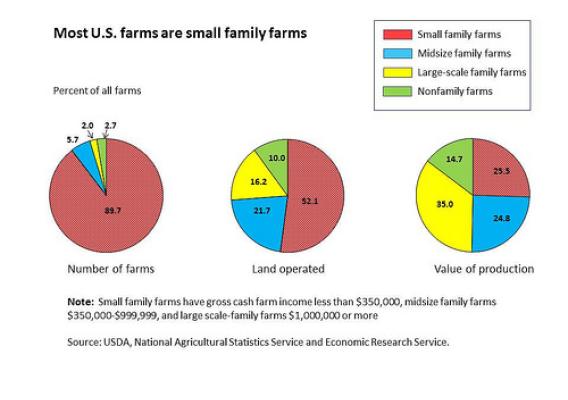This post is part of the Science Tuesday feature series on the USDA blog. Check back each week as we showcase stories and news from USDA’s rich science and research portfolio.
Describing the structure of the U.S. farm sector is challenging, because farms vary widely in size and other characteristics. Are they largely family businesses, or corporate operations? U.S. farms range from very small retirement and residential holdings to businesses with sales in the millions of dollars. And descriptions based on U.S. averages hide much of the variation.
The Economic Research Service prepares periodic reports on family farms that provide detailed information for policy makers and others interested in farm policy and the farm sector. The reports draw on data from a scientifically designed USDA survey, the Agricultural Resource Management Survey, or ARMS. The survey, conducted annually, covers all types of farms, and is designed to accurately represent farms and farm households, including financial conditions and production practices.










